Hail season in Texas can vary from year to year but mostly falls between March and August.
With hail season currently in progress I’m sure a lot of you are wondering “When is hail season in Texas and how long does it last?”. Well in this article you will get all of your common questions about the hail season in Texas and how to prepare for it.
When is Hail Season in Texas?
Seems like a simple enough question right? Well not really because Texas is poised in the perfect position to have crazy weather year-round, but we are able to look at things such as the ForeCAST REPORT that discloses the average amount days that a state receives hail.
Within this report we find that on average from 2017-2019, Texas had 195 days of severe hail days.

That’s more than half the year!
We can also conclude from the data that hail starts to present itself starting as early as February and starts losing steam around July and August.
Of course, the data presented is not weather data but rather insurance claims data. We can correlate the two considering if your roof was damaged by hail you are probably making a claim soon after the storm.
What area’s in Texas get the most hail?
Texas is a large state with varying weather patterns, and hailstorms can occur in different regions at different times of the year. However, some areas of Texas are more prone to hailstorms than others.
According to the National Oceanic and Atmospheric Administration (NOAA), the Texas Panhandle and the region just north of it are the most hail-prone areas in the state. This area is known as “Hail Alley” and includes cities such as Amarillo, Lubbock, and Midland. Other regions in Texas that experience frequent hailstorms include the Dallas-Fort Worth Metroplex, the Austin-San Antonio corridor, and the Gulf Coast.
It’s worth noting that hailstorms can occur in other areas of Texas as well, and residents should always be prepared for severe weather regardless of where they live.
Why Does it Hail When it’s Warm?
How do you make a huge ice ball (AKA: hail) when it’s the hottest months of the year? Well, for us to answer that you need to understand how hail is actually created.
Hail is not simply frozen rain. Frozen rain or sleet is rain that falls from the clouds and freezes before it gets to the ground. Hail on the other hand falls as a solid.
Hailstones are created by layers and layers of water attaching and freezing in a large clump. There is a repetitive process that causes these hailstones to get bigger and bigger.
- The moisture in the air freezes high in the atmosphere where it can be nearly -40 degrees F.
- The small hailstone becomes heavy and tries to fall from the cloud.
- As the small hailstone leaves the cloud it gets kicked back into the atmosphere from an updraft of wind caused by the storm and temperature differences.
- On the way back up it collects a bit more water on the surface and the whole process starts over.
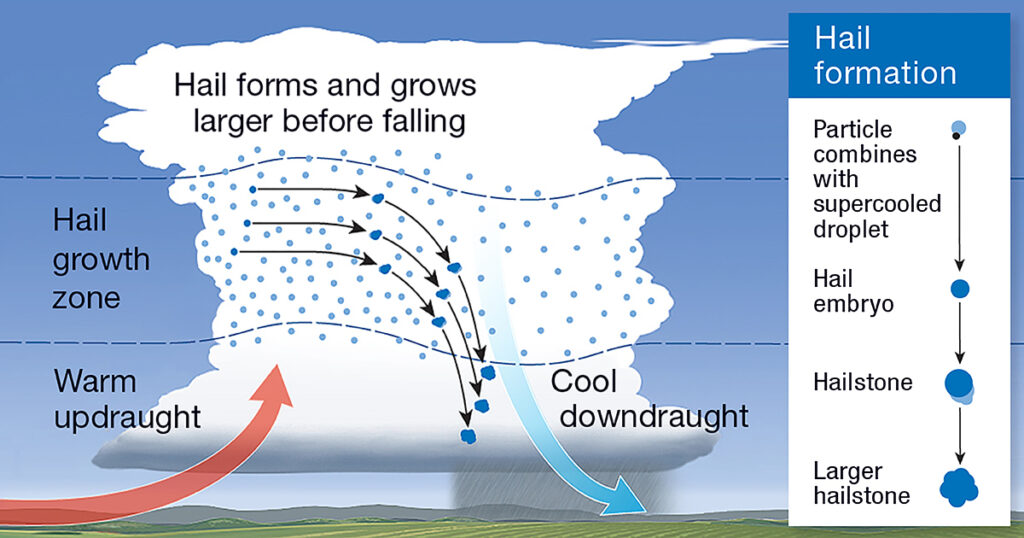
Once the hailstone becomes too big or the updrafts die down the hailstone will fall to the ground. So based off of how much wind and how big and long the storm is determined how big the hailstone will be and how much hail damage it will do to the environment below.
How Do I Prevent Hail Damage?
To be honest mother nature is quite vicious, especially with hail. Hail can range from a couple of milometers to multiple inches across. With that in mind, there are some steps that you can take to make sure your roof is able to stand up to the storms.
- Replace Your Already Damaged Roof
Being in the roofing industry we see the worst of hail damage. We can also tell when someone was just too late to replace their roof before a new storm came in. When that happens it adds insult to injury.
While you have a roof that protects your house, if there is any previous damage, it degrades the chances of you getting through a new storm. Roofing systems work just like a chain and you’re only as strong as your weakest link. - Get a Roof Inspection
Premiere roofing gives free no obligation roof inspection. We will come out and check to see if your roofing system is ready for the storm season. The most common things that we will find on an older roof is granule loss or missing shingles. Your roof might not need a full replacement at the time but could just need a quick repair. Our expert roofers will make sure that you get fixed up to protect you from any light storms you might encounter. - Install Impact Resistant Shingles
Impact Resistant Shingles are one of the best ways to not worry about hail for the most part. There are pros and cons of different types of hail-resistant shingles. These are also commonly referred to as 50-year shingles since their life is so long. We partner with the most prominent manufacturers (Owens Corning, GAF, Certainteed). Most will carry some 50-year shingles or an alternative such as slate or tile shingles.
What if I Have Hail Damage?
There are more and more first-time home buyers that are stuck feeling like they have to hurry and replace their roof if it gets damaged in a hail storm.
If you’re already thinking what does hail damage look like on a roof? Well, you are in luck because we have written a whole blog post on what to look for and what it looks like. Check it out if you want to try to self-assess your damage.
This causes them to go with the first chuck in a truck that knocks on their door. So for all those homeowners just stop and take a breath while I walk you through the process.
Before you think that you are going to have to come out of pocket thousands of dollars don’t worry we can walk you through how to get insurance to pay for your roof replacement.
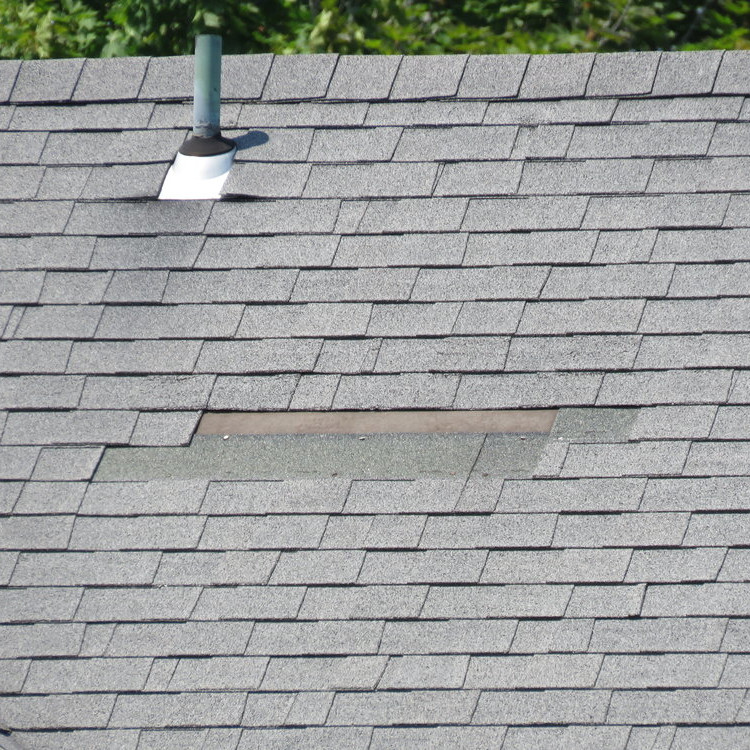
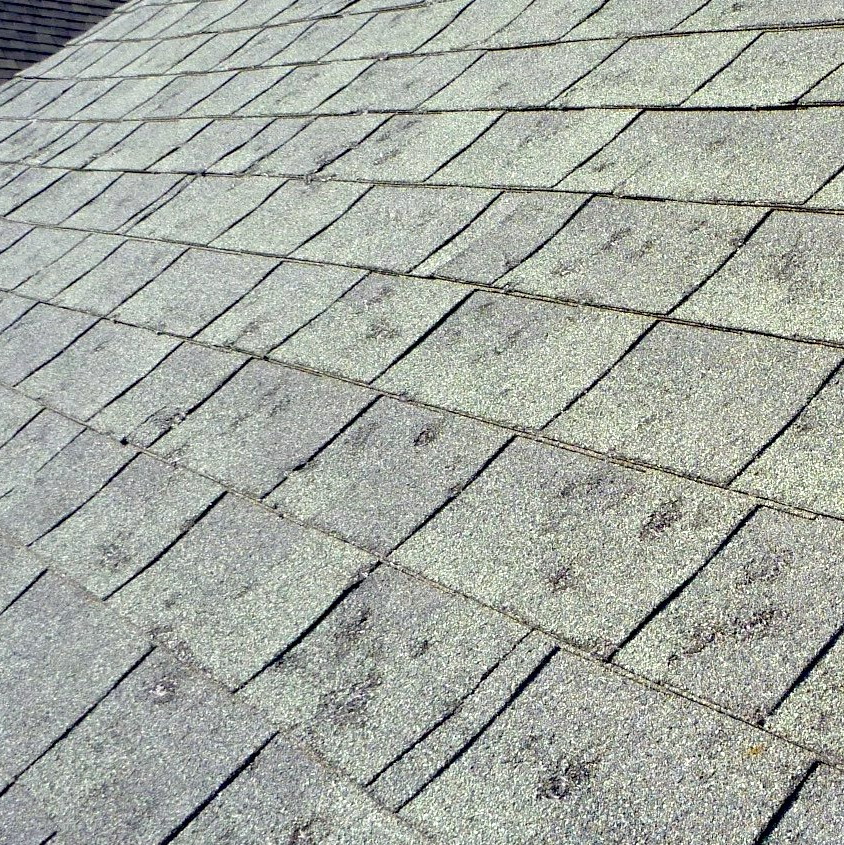
- As a homeowner, you can assess if there may be damage on your roof. Go outside after the storm and see if you can find any of the hailstones. If the hailstones are no bigger than the size of a nickel you are usually just fine. Another great indicator of whether or not you have damage is if leaves from the trees are on the ground. If there isn’t then you are most likely in the clear.
- If you think you might have damage or would like a professional opinion please give us a call and we will come out to your property to assess your entire house for damages. Inspections are always free with no obligation.
- After the inspection, if the damage is found, we recommend you contact your insurance. If the hail season is still early in the year we recommend that you hold off on replacing your roof, but most insurance companies have a limit of one year after the storm date to file a claim.
- Once your insurance claim has been filed, our project manager will attend an adjuster meeting to ensure nothing is missed and that we have everything to take care of your roof replacement.
- If your insurance claim has been approved we will go ahead and get you on the schedule to have your roof replaced. We will then install the roof in one day on most homes and you will be good to go and protected for the next hail season in Texas.
The Economic Impact of Hailstorms in Texas: A Roofer’s Perspective
Roofing companies in Texas face significant challenges due to the economic impact of hailstorms. These severe weather events not only pose risks to individuals and their properties but also result in substantial financial consequences. Understanding the specific effects of hailstorms on roofing businesses is crucial for assessing the costs involved and implementing measures to mitigate their impact.
1. Cost of Roof Damage: Extensive Repair and Replacement Expenses
Hailstorms can cause severe damage to roofs, leading to the need for extensive repairs or even complete replacements. The costs associated with fixing hail damage can be substantial for both residential and commercial properties. Roofing companies bear the burden of providing their expertise and services to restore damaged roofs, resulting in significant financial implications.
2. Surge in Demand: Opportunities and Challenges for Roofing Companies
Following hailstorms, there is a surge in demand for roofing services as property owners seek repairs. This increased demand presents both opportunities and challenges for roofing companies. On one hand, there is a chance to secure more projects and generate higher revenue. On the other hand, meeting the increased demand within a limited timeframe can be challenging, requiring efficient resource allocation and workforce management.
3. Insurance Claims Processing: Impact on Roofing Companies
Hailstorms often lead to a surge in insurance claims for roof damage. Roofing companies play a vital role in assisting property owners with the claims process and working with insurance adjusters. However, the increased volume of claims and the complexities involved can strain the resources and capabilities of roofing companies. It is essential for these companies to manage the claims effectively to ensure timely and fair compensation for their clients.
4. Business Disruptions: Adaptation and Resilience
Hailstorms can disrupt the regular workflow of roofing companies. Adverse weather conditions may hinder ongoing projects or delay scheduled roofing installations. These disruptions can lead to decreased productivity and potential financial losses. Roofing companies must demonstrate adaptability and resilience by adjusting schedules, reallocating resources, and implementing efficient project management practices to mitigate the impact of hailstorms on their operations.
5. Reputation and Customer Trust: Delivering Quality and Reliability
The economic impact of hailstorms extends beyond immediate financial consequences. Roofing companies must prioritize delivering quality workmanship and reliable services to maintain their reputation and gain customer trust. Satisfied customers become advocates for the roofing company, leading to increased referrals and future business opportunities. On the other hand, a poor reputation resulting from subpar workmanship can have long-term detrimental effects on the company’s success.
Conclusion
Our hail season in Texas can vary from year to year but mostly falls between March and August.
Hail is usually found in the warmer seasons because of storms and temperature differences in the atmosphere.
Preventative maintenance is the best way to protect yourself from a hail storm whether that is replacing your already damaged roof or getting a couple of missing shingles replaced.
If you think you might have damage please reach out to us so that we can help you get your home back to the safe haven it’s supposed to be.
We serve residents in Sherman, McKinney, Dallas, Fort Worth, and more.
Call us at (888)-ROOF-NOW or contact us online through our form or live chat!


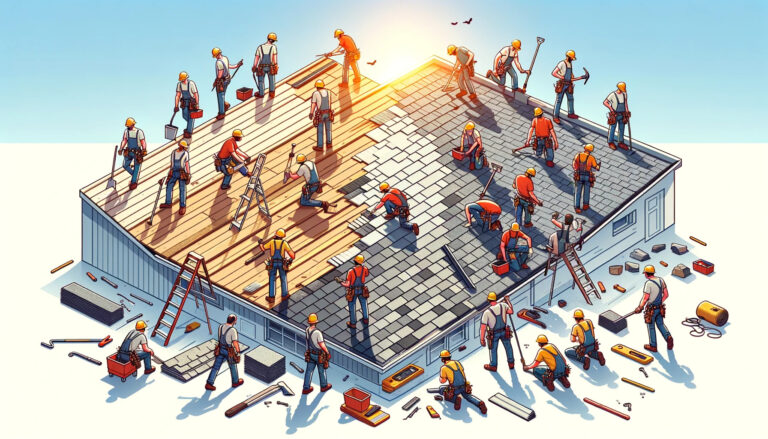
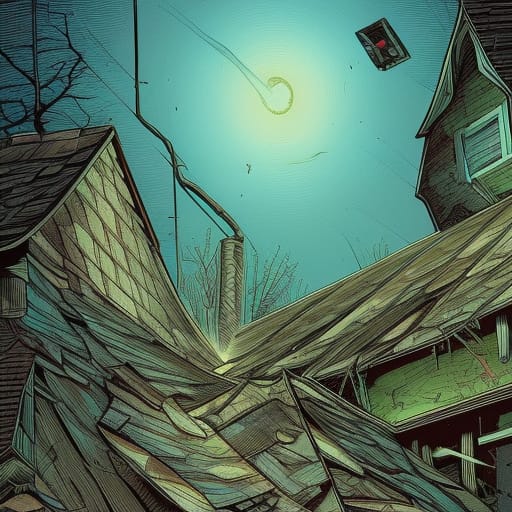

2 Responses
Hello. I am in the process of buying a house and land in Snyder texas. Do you service that area? Thank you
I am sorry we do not go out that far.